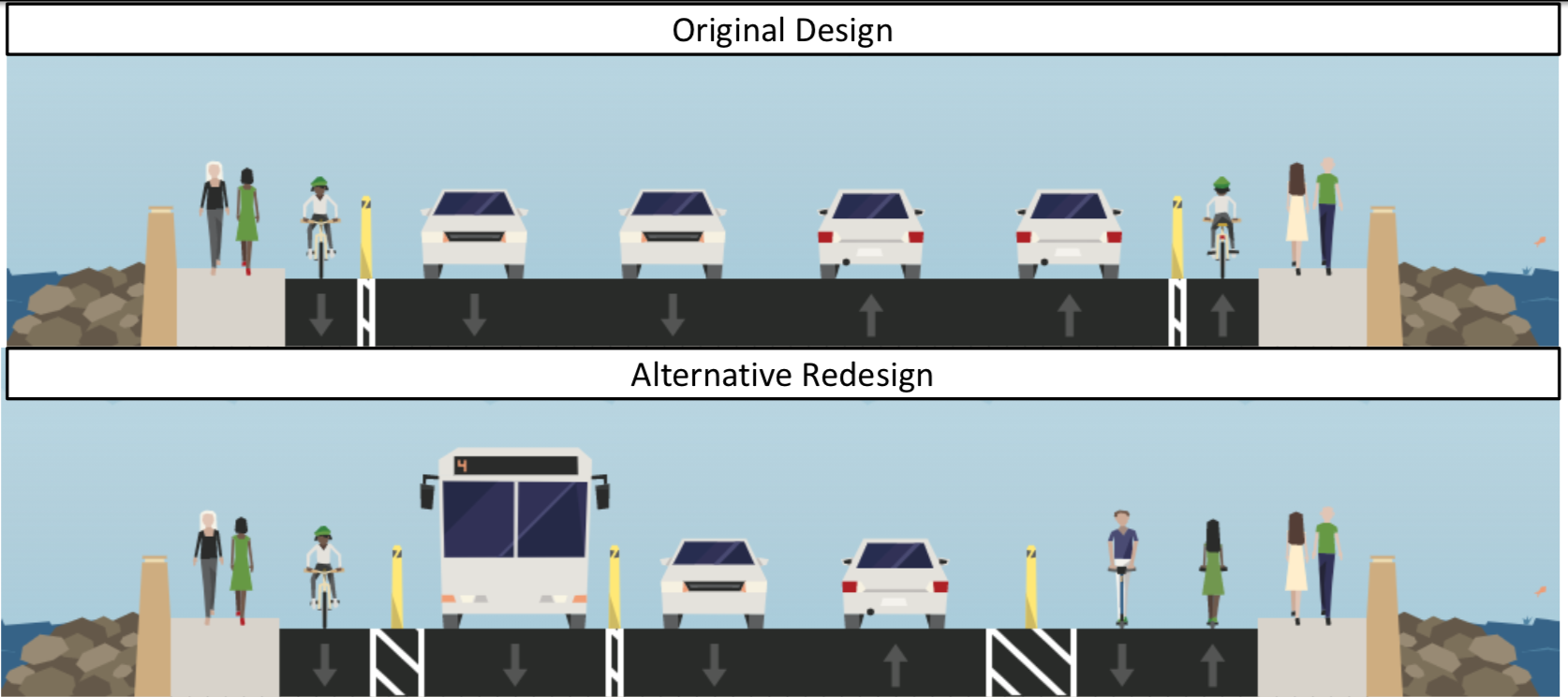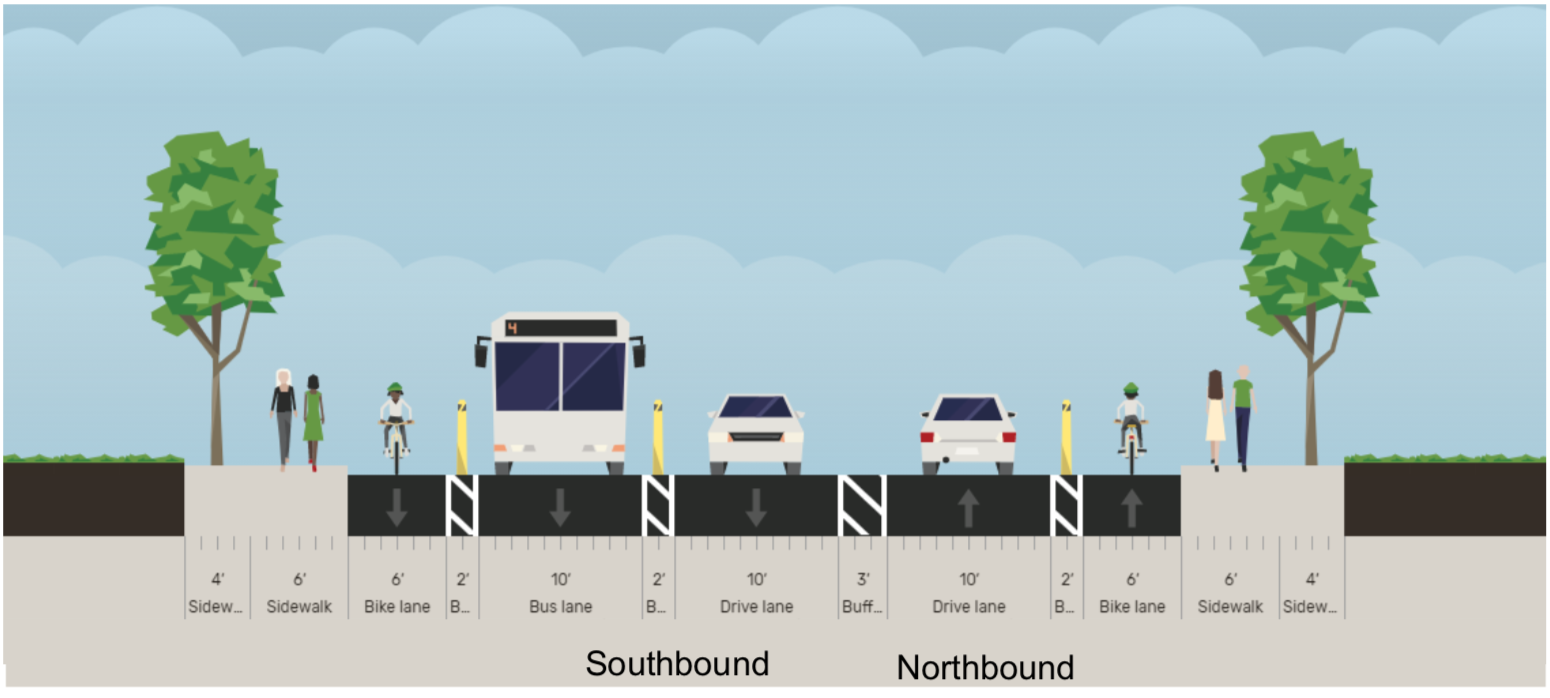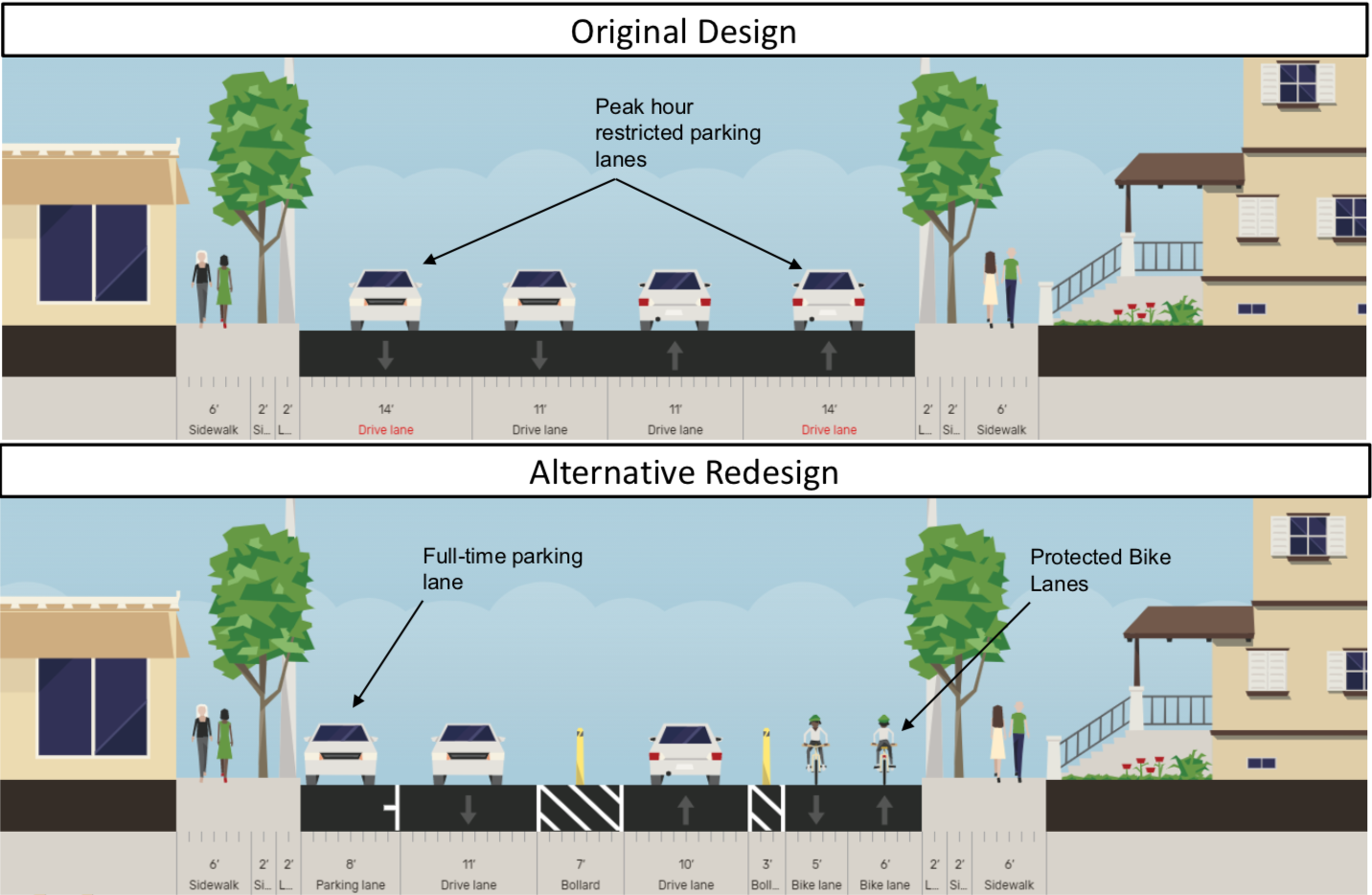A closure of the protected bike lane on Cathedral Street that is no longer legal under the Complete Streets Ordinance.
Baltimore City Department of Transportation is currently updating their Street Cuts Policy. You may not know what exactly that means, but there is a 100% chance you’ve been affected if you walk, bike, take transit, or drive in Baltimore City.
The Street Cuts Policy governs utility work on our roadways, bike lanes, and sidewalks. Prior to the Baltimore Complete Streets ordinance, it was common to see closures like the one in the image above— closures that prioritized keeping the road open for car travel and parking, even if it meant closing a bike lane or sidewalk.
The Complete Streets ordinance changed that, requiring detours to follow the modal hierarchy that puts pedestrians and bicyclists first. We’ve seen successful implementations of the ordinance on Aliceanna Street just before Boston Street or on Charles Street by 33rd Street, where construction is ongoing but safe pedestrian and bicycle access has been maintained.
While these projects are a start, Baltimore City Department of Transportation still needs to update their official guidance to reflect the Complete Streets Ordinance. This will ensure that future projects led by both the city and contractors will also comply with the Complete Streets law — that’s why we need to update the Streets Cut Policy.
We have reviewed the draft of the new policy, and we would like it to include more specific guidance for maintaining access to sidewalks and bike lanes during construction, more aggressive timelines for restoring and repaving streets after work is finished, and to make sure crossings and traffic calming we stripe on that restored street is even better than what was there before and restores any community funded art that may have been damaged or removed.
Our sample language for recommendations is below, and we encourage you edit as you see fit and submit comment before February 22nd.
Thank you for the opportunity to provide comment on the Draft Street Cuts Policy.
This is an opportunity to not only see street restorations, but street improvements. Whenever a complete streets treatment/vision zero treatment like a crosswalk or curb extension is affected, the entire treatment should be fully restored and if possible, enhanced. For example, a standard crosswalk should be restriped fully as a continental crosswalk, even if only a partial section of crosswalk was cut.
Art in the ROW and all other decorative treatments that enhance an intersection or street need to be replaced/restored in-kind.
Same side detours must be required for sidewalk or bicycle lane closures. This should only be allowed to be overruled by a written exemption and explanation from the Director.
When same side detours are in place, they should meet or exceed the level of separation provided previously. For example, separated bike lane detour shall continue to be separated by a vertical element like flex posts, or water or jersey barrier. There should be minimum widths of 5 feet or greater for a one-way bike detour and 8 feet or greater for a two-way bike detour, just as there are minimum widths for sidewalk detours.
When a written exemption for a same side detour is made by the Director, the approved detour shall meet or exceed the level of comfort for the detoured facility. For example, a separated bike lane detour must include separation on the entire detour, it can't just be signage to use an adjacent street non-separated bike lane.
The 120 day period for full restoration is too long. This needs to be substantially reduced, to 60 days or less.
Fines should be dramatically increased, and escalate significantly for continued violation by contractors. This revenue will be needed to hire more inspectors.












